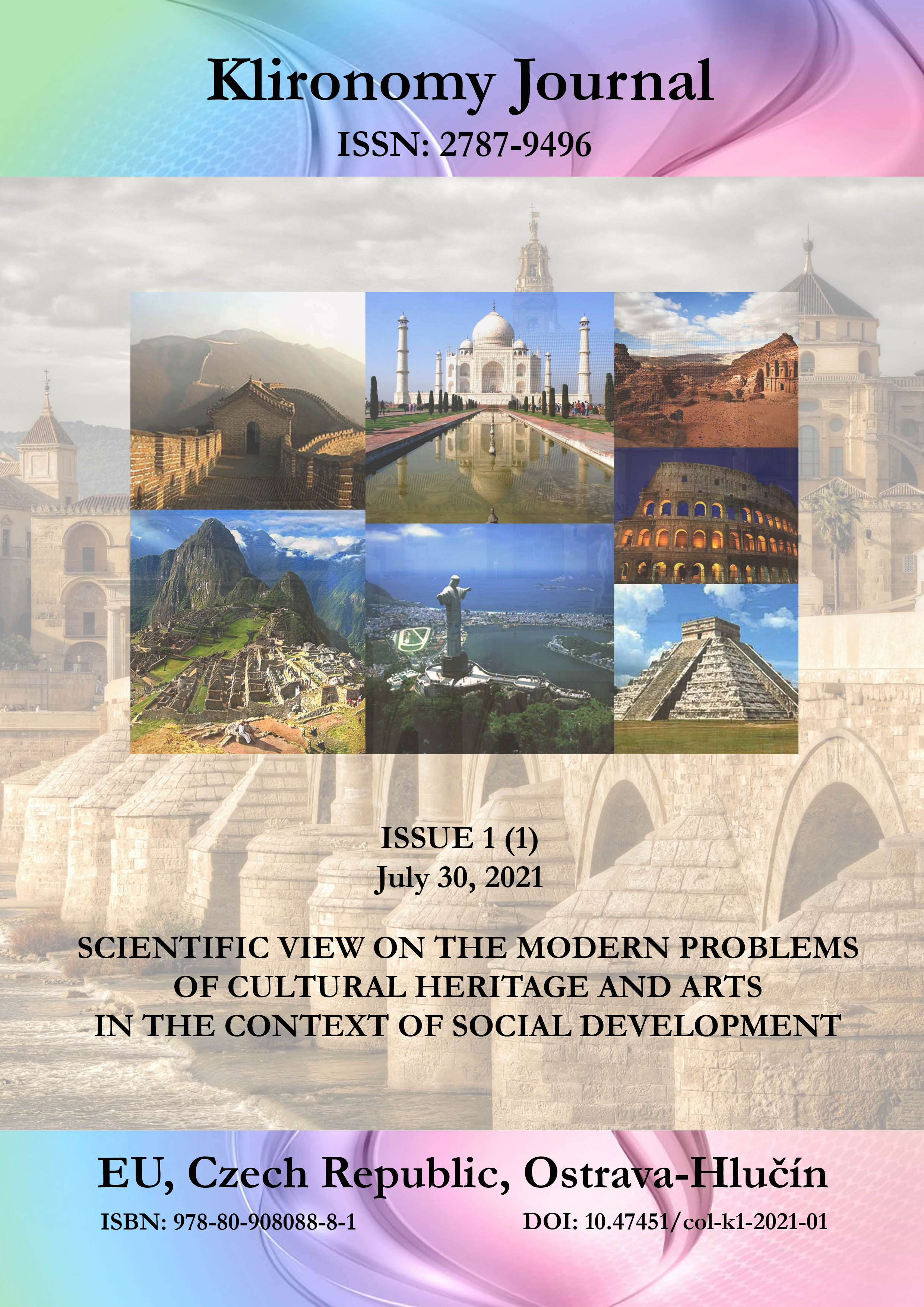Literary Magazine as a Historical Memory Keeper
DOI:
https://doi.org/10.47451/her2021-05-001Keywords:
A.A. Guseynov, literary magazine, cultural heritage preservation, journalism as a heritage, heritage keepers, control over information, publishing, institutional and non-institutional ways of heritage preservationAbstract
The study object was 19th-century Russian journalism as a social institution associated with preserving cultural heritage and historical memory. The issues of cultural heritage preservation in the Russian Empire of the first half of the 19th century are considered using a 19th-century literary magazine as an example. Journalism occupies no less a place in culture than art, morality, science and technology. Influencing the public consciousness, journalism is important, because addressing, it raises the question of public confidence in the authorities. Thus, journalists are the keepers of the heritage. This can contribute to the stability and development of society. In the course of the study, it was possible to trace how the journalistic and practical activities of writers, intellectuals and publishers contributed to the unification of publicists, statesmen and scientists and influenced the formation of public consciousness, as well as programs and institutions for the preservation of cultural heritage.
Downloads
References
Bourdieu, P. (1994). Beginnings. Choses dites. (Trans.). Moscow. (In Russ.)
Gromova, L. P. (2017). Modern journalism in the discourse of tradition. Journalism and Morality. Collection of articles based on the materials of the round table, 13. Vladikavkaz: North Ossetian State University named after K.L. Khetagurov. (In Russ.)
Dmitriev, A. N. (Ed.) (2012). Historical culture of Imperial Russia: formation of ideas about the past. Moscow: Publishing House of the Higher School of Economics. (In Russ.)
Collins, R. (2002). Sociology of philosophy: a global theory of intellectual change. (Trans. by N.S. Rozova and Y.B. Wertheim). Novosibirsk: Siberian Chronograph. (In Russ.)
Korkonosenko, S. G. (2017). Political journalism. Moscow. (In Russ.)
Lebedeva, G. N. (2021). HOMO ACADEMICUS. Part I. Scientific and Public organizations of the Russian Empire: between State Responsibility and Private Initiative. Eastern European humanitarian collection of mini monographs. European Scientific e-Journal, 7, 61-107. Hlučín. (In Russ.)
Lebedeva, G. N. (2020). Philosophy of cultural heritage: scientific and public organizations of the Russian Empire. Eurasia: Current Issues of Cultural Heritage. European Scientific e-Journal, 3, 51-61. Hlučín.
Lemke, M. (1904). Essays on the history of Russian censorship and journalism of the 19th century. St Petersburg. (In Russ.)
Lisovsky, N. M. (1915). Bibliography of the Russian periodical press. 1703-1900. (Materials for the history of Russian journalism). Petrograd. (In Russ.)
Rakitov, A. I. (2014). Historical cognition: A system-epistemological approach. Moscow: Direct-Media. (In Russ.)
Savelyeva, I. M., & Poletaev, A. V. (2015). Social representations of the past: sources and representations. Moscow. (In Russ.)
Stanko, A.I. (2003). Journalism of the first quarter of the 19th century. In History of Russian journalism of the 18th and 19th centuries: Textbook (pp. 182-183). St. Petersburg. (In Russ.)
Tretyakov, V. T. (2013). How to become a famous journalist: A course of lectures on the theory and practice of modern Russian journalism. Moscow: Direct-Media. (In Russ.)
Schmidt, S.O. (1962). On the subject of Soviet historiography and some principles of its periodization. History of the USSR, 1. (In Russ.)
Shchebalsky, P. K. (1862). Historical information about censorship in Russia. St Petersburg. (In Russ.)
Philosophy and Journalism (to A.A. Krayevsky 200th anniversary, 1810-1889). Symposium at the IF RAS on May 11, 2010. (In Russ.). https://iphras.ru/page50602039.htm
Published
Issue
Section
License
Copyright (c) 2025 Klironomy

This work is licensed under a Creative Commons Attribution 4.0 International License.
The Klironomy is an open access journal. Articles are available free of charge as PDF files on the website of the European Institute for Innovation Development. PDF files can be previewed with Acrobat Reader from www.adobe.com.
All articles of the Klironomy are published under a Creative Commons Attribution 4.0 Generic (CC BY 4.0) International license.
According to the Creative Commons Attribution 4.0 Generic (CC BY 4.0) International license, the users are free to Share — copy and redistribute the material in any medium or format for any purpose, even commercially (the licensor cannot revoke these freedoms as long as you follow the license terms).
Under the following terms:
- Attribution — You must give appropriate credit, provide a link to the license, and indicate if changes were made. You may do so in any reasonable manner, but not in any way that suggests the licensor endorses you or your use.
- No additional restrictions — You may not apply legal terms or technological measures that legally restrict others from doing anything the license permits.





